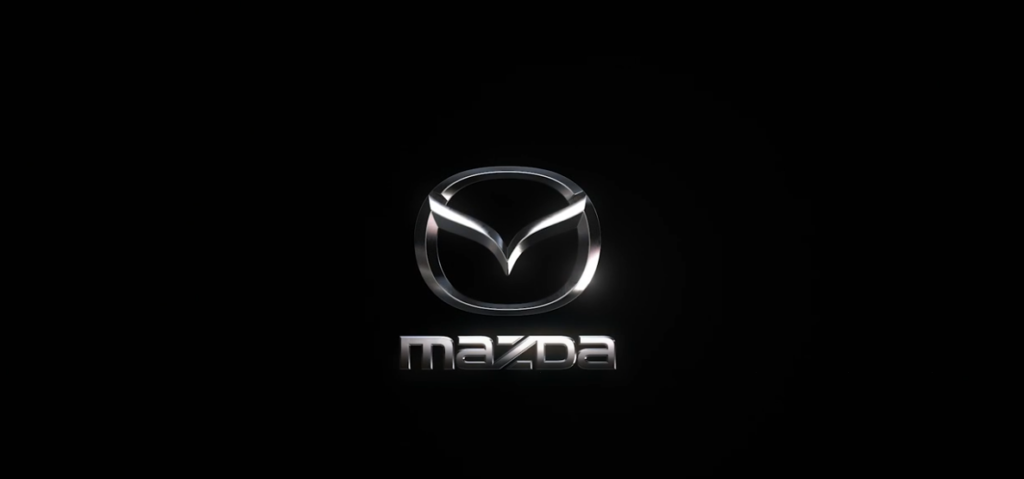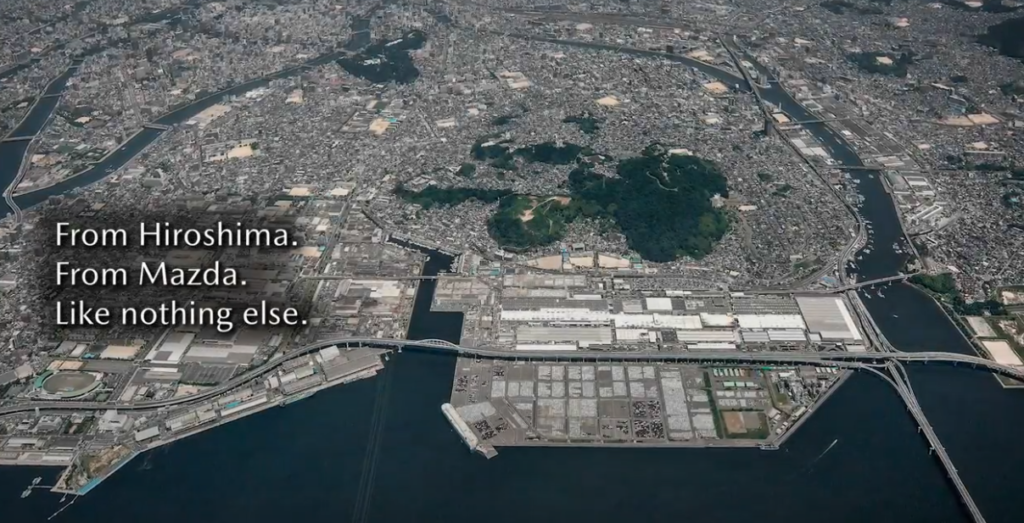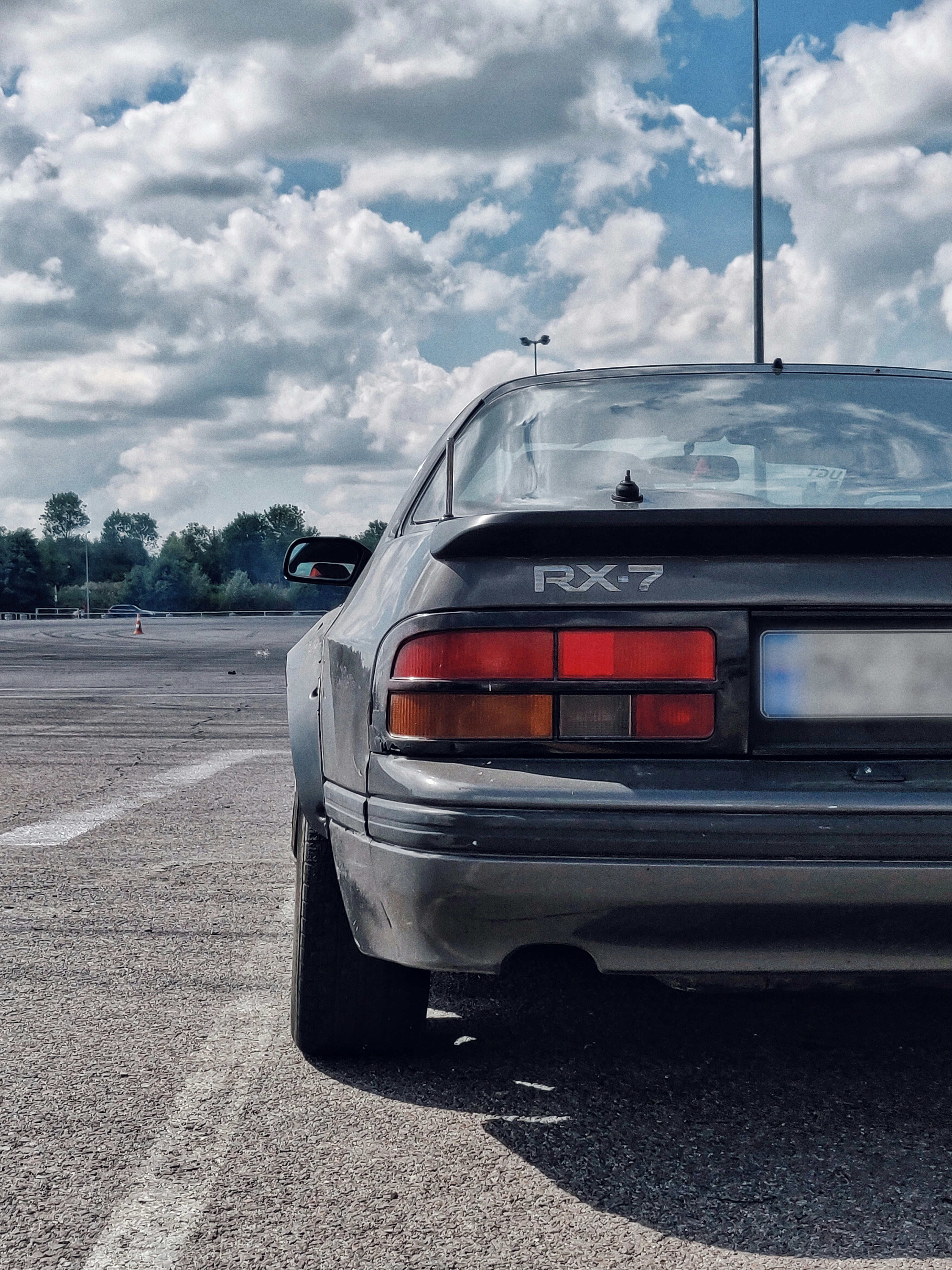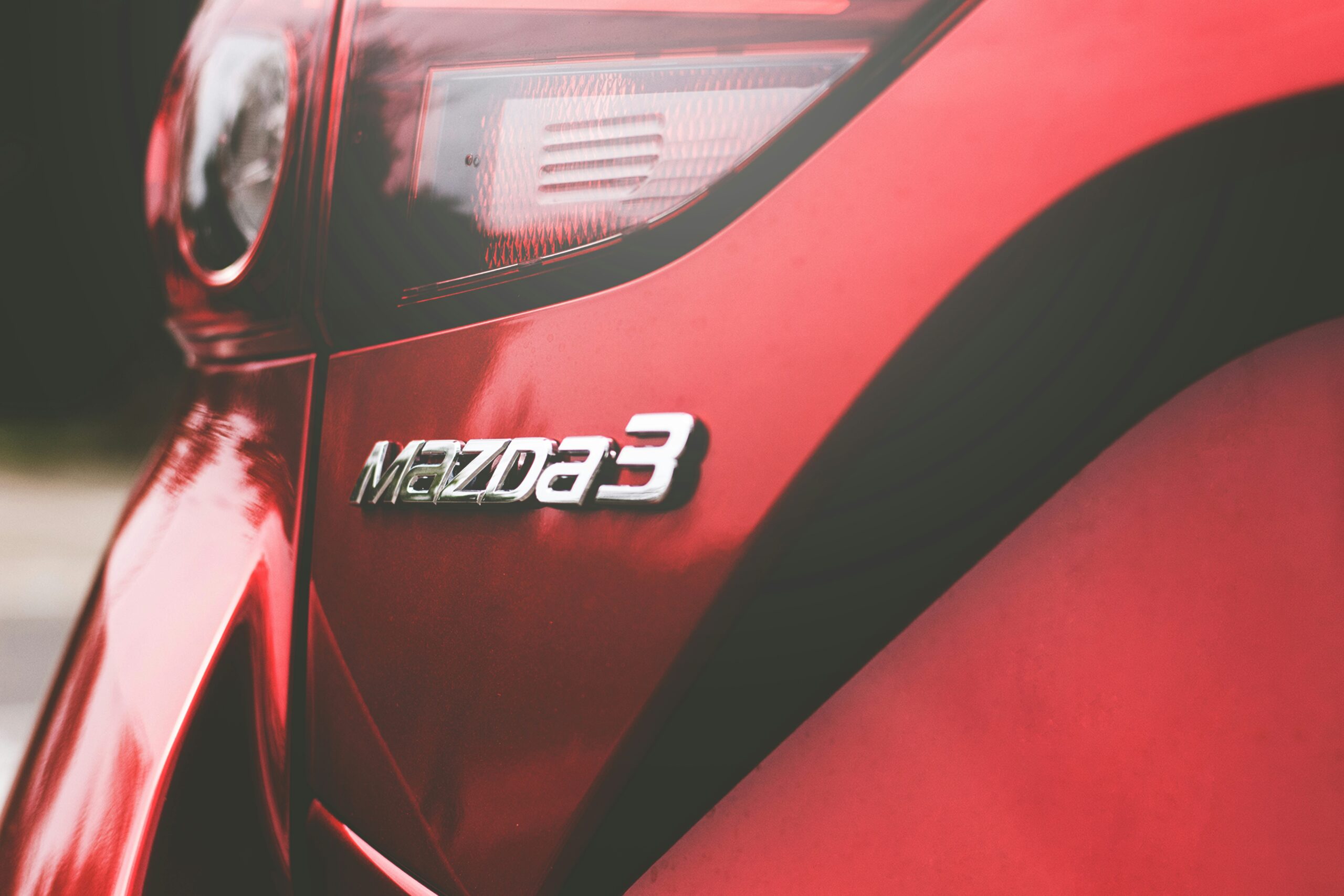Introduction to Mazda: A Journey Through History
Founded in 1920, Mazda cars began their journey in Hiroshima, Japan, initially as a manufacturer of tools and machinery. Over the years, it transitioned into producing vehicles, becoming a significant player in the automotive industry. One pivotal moment in the history of Mazda cars occurred in 1931 when the company introduced the Mazda-Go, a three-wheeled truck that marked its entry into the automotive market. This vehicle demonstrated Mazda's innovative spirit and set the tone for future developments.
Throughout the 1950s and 1960s, Mazda cars continued to evolve, introducing several notable models, including the R360 Coupe and the Familia. The launch of the Mazda Cosmo in 1967 marked a significant milestone for Mazda cars, as it became the first production car powered by a rotary engine, showcasing the company's commitment to technological advancement. This unique engine design has become synonymous with the Mazda brand, emphasizing its focus on innovation and performance.
The 1980s saw Mazda cars expanding their global presence, forming partnerships with manufacturers such as Ford, which further solidified their position in the automotive market. The introduction of the MX-5 Miata in 1989 was a defining moment for Mazda cars, representing a revival of the spirit of lightweight sports cars. This model played a crucial role in the brand's identity, garnering widespread acclaim for its design and driving experience.
As Mazda cars entered the 21st century, they continued to innovate, introducing the KODO design philosophy and Skyactiv technology aimed at improving fuel efficiency and performance while reducing emissions. These advancements reflect the company's core values of creating vehicles that enhance driving experience while maintaining a commitment to sustainability. Today, Mazda cars stand as a reputable automotive manufacturer, known for their dedication to quality, design, and engineering excellence.

The Mazda Philosophy: Zoom-Zoom and Beyond
The allure of Mazda cars lies not only in their design but also in their performance capabilities, which attract a loyal following.
The essence of the Mazda brand is encapsulated in its well-known slogan, “Zoom-Zoom,” which conveys a deep-seated passion for driving that transcends mere transportation. This philosophy represents Mazda's unwavering commitment to creating vehicles that not only meet the functional needs of drivers but also inspire joy and excitement on the road. At the heart of the “Zoom-Zoom” concept is the notion that satisfied drivers are those who experience a dynamic connection with their vehicles, contributing to an overall sense of fulfillment and pleasure during driving.
When engineers design Mazda cars, they emphasize agility and responsiveness, creating a dynamic driving experience.
Furthermore, the philosophy of Mazda cars extends to their dedication to enhancing customer satisfaction and ensuring sustainability in their production.
This philosophy profoundly influences Mazda’s design and engineering processes. When crafting each vehicle, Mazda strives to produce cars that embody agility, responsiveness, and exhilarating handling. These characteristics are achieved through rigorous testing and innovative engineering solutions that enhance performance while prioritizing driver engagement. For instance, Mazda’s renowned SKYACTIV technology, which encompasses engine, transmission, and chassis design, reflects the brand's dedication to achieving optimal efficiency without compromising driving enjoyment.
The engineering excellence of Mazda cars is evident in their iconic rotary engines, which have become a hallmark of performance.
The Wankel rotary engine is a notable feature that sets Mazda cars apart from many competitors in the automotive landscape.
The unique design of Mazda cars' rotary engines allows for remarkable acceleration and smooth operation, enhancing the overall driving experience.
Furthermore, Mazda's philosophy extends beyond performance to encompass customer satisfaction and sustainability. The company is committed to creating products that resonate with consumers, ensuring that each vehicle provides lasting value and connection. Mazda recognizes the importance of environmental responsibility and is actively involved in sustainable practices, including the development of eco-friendly vehicles and the incorporation of recyclable materials in manufacturing processes. These initiatives align with Mazda's goal of creating a harmonious balance between the joy of driving and the welfare of our planet.
The current lineup of Mazda cars showcases a range that meets diverse consumer needs, highlighting their versatility.
Among the popular models, the Mazda3 stands out for its engaging driving dynamics and stylish design, making it a favorite among drivers.
The Mazda CX-5 also captures attention, blending utility and performance, appealing to families and adventurers alike.
With models like the MX-5 Miata, Mazda cars continue to be a top choice for sports car enthusiasts who appreciate spirited driving.
In conclusion, Mazda's “Zoom-Zoom” philosophy is a comprehensive approach that underscores the brand's dedication to providing an outstanding driving experience while addressing contemporary issues such as sustainability and innovation. This balanced outlook not only promotes customer loyalty but also positions Mazda as a forward-thinking leader in the automotive industry.

Iconic Engines: The Heart of Mazda Performance
Mazda cars are manufactured using advanced processes that ensure quality and consistency across their model range.
The Ujina Plant is a key facility for Mazda cars, producing many of the models that enthusiasts love worldwide.
This global reach allows Mazda cars to meet international standards while catering to local market preferences.
Sustainability initiatives are also central to the production of Mazda cars, reflecting their commitment to environmental stewardship.
Innovative safety features and connectivity options in Mazda cars enhance the overall driving experience and consumer satisfaction.
The distinctive engineering of Mazda has earned the company a reputable position within the automotive industry, particularly due to its legendary engines. One notable innovation is the Wankel rotary engine, which has set Mazda apart from traditional piston engine designs. This unique engine architecture features a triangular rotor that revolves within an epitrochoidal chamber, distinguishing it with a compact form and lighter weight compared to conventional engines. The Wankel rotary engine offers an impressive power-to-weight ratio, contributing to Mazda’s performance-driven ethos.
Drivers of Mazda cars benefit from user-friendly technology that keeps them connected without distractions.
The advantages of the rotary engine include reduced vibration, fewer moving parts, and a smoother operation overall. In addition, Mazda's rotary engines allow for a higher RPM range, enabling these vehicles to deliver exceptional speeds and acceleration. However, this unique design comes with its challenges. Wankel engines typically possess lower thermal efficiency compared to conventional piston engines and can present difficulties in emissions management, which has led to scrutiny regarding their environmental impact. Despite this, Mazda has continued to optimize the rotary design to enhance efficiency while maintaining exhilarating performance.
Throughout its history, Mazda has continually explored innovations in engine technology to meet consumer demands and compliance standards. The 2020 unveiling of the Mazda RX-vision concept reaffirms the company's commitment to the rotary engine, showcasing its potential for future performance models. With a philosophy centered around the engagement of driving, Mazda prioritizes performance through meticulous engine engineering, enhancing both the experience and efficiency of its vehicles. It is evident that the iconic engines of Mazda play a crucial role in defining the essence of what it means to drive a Mazda, paying homage to their engineering roots while charting a visionary future.
As the market shifts towards sustainability, Mazda cars are adapting with hybrid and electric vehicle options for eco-conscious consumers.
The fully electric Mazda MX-30 represents the brand's commitment to a greener future while maintaining performance standards.
Current Mazda Model Lineup
The current Mazda model lineup showcases a diverse range of vehicles that cater to various market segments, all while embodying the company’s core values of innovation, quality, and driving pleasure. Among the notable offerings is the Mazda3, a compact car that has gained worldwide acclaim for its sleek design, dynamic handling, and premium materials. Available in both sedan and hatchback configurations, the Mazda3 appeals to a broad audience, including young professionals and small families seeking an engaging driving experience in an everyday vehicle.
Next in line, the Mazda CX-5 stands out as a popular compact SUV, celebrated for its practicality mixed with stylish aesthetics. It features a spacious interior, advanced safety technologies, and Mazda’s signature Kodo design philosophy that emphasizes elegance and sportiness. The CX-5 targets families and active individuals who require versatility without compromising on style. Its performance is further enhanced by the Skyactiv technology, which optimizes engine efficiency and overall driving dynamics.
Another iconic model from Mazda is the MX-5 Miata, widely recognized as one of the most beloved sports cars in the automotive landscape. Renowned for its lightweight construction and rear-wheel-drive layout, the MX-5 delivers an exhilarating open-top driving experience. Enthusiasts appreciate its precise steering, balanced handling, and the joy of driving, which aligns with Mazda's philosophy of enhancing the connection between driver and machine. This model is often favored by those who seek an affordable yet exhilarating option in the sports car segment.
Each of these models reflects Mazda's dedication to excellence and innovation, ensuring that the brand continues to capture the hearts of drivers around the globe. This comprehensive approach to their lineup positions Mazda as a leader in the automotive industry, appealing to a wide audience while remaining true to its roots.
Mazda's Global Manufacturing: Where and How Cars are Made
Mazda is renowned for producing vehicles that embody quality craftsmanship, innovative engineering, and strong performance. The company's manufacturing processes span across several continents, demonstrating a robust global presence. With facilities in Japan, the United States, Mexico, Thailand, and more, Mazda's operations are designed to meet diverse market demands while ensuring adherence to its high-quality standards.
Ultimately, Mazda cars are poised to lead in both innovation and sustainability as they embrace electrification and advanced technology.
The principal manufacturing plant is located in Hiroshima, Japan, known as the Ujina Plant. It is where a significant percentage of Mazda's vehicles, including iconic models like the Mazda3 and Mazda CX-5, are assembled. The Ujina Plant utilizes advanced automation and robotics, coupled with skilled labor, to enhance productivity and precision. Quality control is paramount in this facility, with rigorous assessments conducted at every production stage to guarantee that vehicles leave the plant in optimal condition.
Additionally, Mazda operates several joint ventures and collaborations, most notably with Ford Motor Company in the past, and currently with Toyota. These partnerships enable Mazda to combine resources and technology, leading to innovative vehicle designs and manufacturing processes. For instance, the collaboration with Toyota led to joint production operations in the United States, allowing Mazda to expand its footprint in the competitive North American market.
Sustainability is an integral aspect of Mazda's manufacturing philosophy. The company has implemented eco-friendly practices to reduce its environmental impact, such as using renewable energy sources and recycling waste materials during production. Efforts to minimize carbon footprint have led to enhanced efficiencies in manufacturing processes, ensuring that Mazda not only meets customer expectations but also aligns with global sustainability goals. This commitment reflects Mazda's aspiration to create a cleaner future, thereby reinforcing its reputation as a responsible automaker.

Innovations in Technology: Safety and Connectivity
In the competitive landscape of the automotive industry, Mazda continues to set itself apart by integrating cutting-edge technology into its vehicles, particularly in the realms of safety and connectivity. Central to these advancements is the i-ACTIVSENSE safety system, which consists of a suite of innovative features designed to enhance overall driver and passenger safety. This system employs various sensors and cameras to monitor the environment around the car, providing real-time alerts and assistance to the driver. Technologies within i-ACTIVSENSE include adaptive cruise control, lane-keeping assist, and automatic emergency braking. Such features exemplify Mazda's commitment to not only building vehicles that are enjoyable to drive but also prioritizing the safety of everyone on the road.
Moreover, the MZD Connect infotainment system is another remarkable technological advancement in Mazda vehicles that significantly enhances the driving experience. This system allows drivers to connect their smartphones seamlessly through Apple CarPlay and Android Auto. Mazda's MZD Connect fosters connectivity, enabling users to access navigation, music, and various apps directly from the vehicle’s touchscreen display. The attention to user-friendly interfaces and intuitive controls underscores Mazda's understanding of modern drivers' needs, ensuring that they remain focused on the driving experience rather than being distracted by complex technology.
Furthermore, these innovations reflect a wider trend within the automotive industry, where connectivity and safety are increasingly becoming defining characteristics of modern vehicles. Mazda recognizes that enhancing the driver experience means not only delivering a responsive and engaging drive but also incorporating technology that consumers expect in today’s digital age. As a result, the brand's steadfast dedication to integrating these sophisticated systems allows Mazda to maintain its competitive edge and fulfill its promise of excellence in both performance and safety.
The Future of Mazda: Electrification and Beyond
As the automotive industry evolves, Mazda is strategically positioning itself to embrace a future characterized by electrification and sustainability. This vision recognizes the pressing need for automotive manufacturers to address environmental concerns while remaining committed to the performance and driving experience that Mazda enthusiasts have come to cherish. The company has announced various initiatives aimed at transitioning towards a greener lineup, which includes a focus on hybrid and electric vehicles.
In recent years, Mazda has unveiled plans for the rollout of its electrified vehicle segment, with the introduction of new hybrid models and fully electric versions, such as the Mazda MX-30. By integrating electric drive systems and advanced battery technologies, Mazda aims to enhance the efficiency of its vehicles while maintaining the spirited performance that is synonymous with its brand. The company's commitment to innovation is evident in its development of the e-SKYACTIV technology, which optimizes energy usage without compromising driving dynamics.
Moreover, Mazda recognizes the importance of aligning with global environmental regulations aimed at curbing carbon emissions. The automaker has set ambitious targets to reduce the overall carbon footprint of its production and supply chain processes. This proactive approach not only adheres to stricter governmental policies but also positions Mazda as a forward-thinking competitor in the electrified landscape. The development of sustainable manufacturing practices, such as utilizing eco-friendly materials and improving energy efficiency across its production facilities, further underlines Mazda's dedication to sustainability.
Ultimately, the future of Mazda is a harmonious blend of tradition and innovation, as the company seeks to deliver vehicles that resonate with both performance enthusiasts and environmentally conscious consumers. Through its commitment to electrification, Mazda is poised to redefine what it means to drive a Mazda, ensuring that its legacy of excellence continues while embracing an eco-friendlier automotive future.
Mazda's Community Engagement and CSR Initiatives
Mazda is not only known for its innovative vehicles but also for its commitment to corporate social responsibility (CSR) and community engagement. The company believes in giving back to the communities that nurture its growth and where its fans reside. This multifaceted approach encompasses initiatives aimed at education, the environment, and community development, reflecting Mazda's dedication to fulfilling its corporate responsibilities.
One of the cornerstone initiatives of Mazda's CSR is its support for educational programs. The company actively collaborates with various educational institutions to promote STEM (Science, Technology, Engineering, and Mathematics) learning among students. This engagement is not merely philanthropic; it is a strategic effort to inspire the next generation of engineers and innovators who might one day contribute to the automotive industry. By investing in scholarships, sponsoring educational workshops, and participating in career fairs, Mazda fosters a learning environment that encourages youth to pursue careers in engineering and technology, which can directly benefit the automobile sector.
In addition to educational support, Mazda is also keenly aware of its environmental responsibility. The company has implemented various sustainability initiatives designed to minimize its ecological footprint. This includes a commitment to reduce waste in its manufacturing processes and to promote recycling. Mazda's Production Division is focused on creating vehicles that are not only efficient but also environmentally friendly. This commitment to sustainability extends to community projects, such as tree-planting programs and clean-up initiatives aimed at preserving local ecosystems. Such projects demonstrate Mazda's intent to mitigate environmental impact while fostering community spirit.
Furthermore, Mazda engages in various community development programs that support local organizations and charities. By partnering with grassroots movements and non-profits, Mazda amplifies its community impact. The contributions can take the form of financial support, volunteer hours from employees, or providing resources to enhance community facilities. Through these diverse initiatives, Mazda reinforces its pledge to be a responsible corporate citizen that truly values the communities it benefits from.
Conclusion: Mazda's Legacy and Future Aspirations
As we reflect on the enduring legacy of Mazda, it becomes evident that the company's journey has been marked by a harmonious blend of tradition and innovation. Founded in 1920, Mazda positioned itself as a forward-thinking automotive manufacturer, gaining recognition not only for its vehicles but also for its commitment to engineering excellence. The iconic rotary engine, which emerged in the 1960s, stands as a testament to Mazda's innovative spirit and its ability to challenge conventional automotive designs. This unique engineering feat demonstrated Mazda's willingness to explore uncharted territories, setting the company apart in a competitive marketplace.
However, Mazda's legacy goes beyond just groundbreaking technologies. It showcases a brand that deeply values its heritage while adapting to the changing dynamics of the automotive industry. The company has prioritized sustainability, striving for the development of environmentally friendly technologies such as the SKYACTIV® technology and their electrification efforts. These initiatives reflect Mazda's aspiration to meet the evolving expectations of consumers who are increasingly concerned about the environmental impact of their vehicles.
Moving forward, Mazda’s aspirations for the future indicate a commitment to creating vehicles that not only address performance and efficiency but also resonate emotionally with drivers. The company's recent ventures into electrification and advanced safety technologies highlight its dedication to shaping an automotive landscape that prioritizes innovation while respecting its rich history. In a world where consumer preferences are shifting, Mazda remains resolute in its pursuit of excellence, striving to deliver vehicles that are both enjoyable to drive and environmentally responsible.
In conclusion, Mazda stands at a pivotal intersection of its storied past and an ambitious future. The company's relentless pursuit of innovation while honoring its traditions ensures that it will continue to thrive in the dynamic automotive industry. As it charts its course ahead, Mazda will undoubtedly remain a significant player, driven by its commitment to excellence and a passion for crafting exceptional automotive experiences.

The Rotary Engine Explained
The Mazda RX7 is renowned for its distinctive rotary engine, a design that sets it apart from traditional piston engines. Unlike conventional engines that rely on a series of reciprocating pistons, the rotary engine operates using a three-sided rotor that revolves within an oval-shaped chamber. This unique mechanism not only reduces the number of moving parts but also results in a more compact and lightweight construction, which is a significant advantage for automotive engineering.
The operation of the rotary engine is based on the principles of constant circulation. As the rotor spins, it creates distinct chambers that facilitate the intake, compression, combustion, and exhaust processes in a continuous cycle. This smooth operation contributes to a higher power-to-weight ratio, allowing the RX7 to experience impressive acceleration and responsiveness. The lightweight nature of the rotary engine complements the vehicle’s overall design, enhancing its agile handling and performance on the road.
One of the notable benefits of the rotary engine design is its ability to deliver high RPMs without the weight penalties associated with piston engines. This characteristic not only improves performance but also contributes to a distinctive exhaust note that is uniquely characteristic of rotary-powered cars. Furthermore, the compact size of the rotary engine allows for design flexibility within the vehicle, providing engineers with more options for weight distribution and center of gravity optimization.
The RX7's rotary engine thus serves not only as a power source but also as a testament to Mazda's commitment to innovation and performance. By employing this unconventional engine design, Mazda has created a vehicle that offers a distinctive driving experience, characterized by quick acceleration and remarkable agility. As a result, the rotary engine has become an iconic symbol of the RX7’s legacy, celebrated by automotive enthusiasts and collectors alike.
Technological Advancements in Mazda's Rotary Engine
The Mazda RX7 stands out not only for its design and driving experience but also for the technological innovations that revolutionized the performance of rotary engines. Mazda's commitment to enhancing the rotary engine began with the development of superior materials. By utilizing advanced alloys and coatings, Mazda significantly improved the durability and reliability of engine components. This shift not only extended the engine's lifespan but also enhanced its resistance to thermal stress and wear, addressing issues typically associated with earlier rotary models.
Furthermore, Mazda advanced the ignition system of the RX7 to ensure a more efficient combustion process. The introduction of sequential ignition and improved spark plug technology allowed for precise timing and a more complete fuel burn. This not only facilitated enhanced power output but also reduced emissions, aligning with increasingly stringent environmental regulations. The company’s focus on a comprehensive ignition strategy showcased their commitment to innovation, rectifying performance deficiencies seen in predecessor rotary engines.
Another vital aspect of Mazda’s technological enhancements in the RX7 was the development of improved cooling systems. The incorporation of more efficient heat exchangers and enhanced radiator designs allowed the rotary engine to maintain optimal operating temperatures, mitigating the overheating problems often associated with the unique rotary configuration. By integrating advanced cooling technology, Mazda enhanced engine performance under various driving conditions, contributing to the RX7's reputation as a reliable sports car.
These innovations collectively addressed the challenges faced by earlier rotary engines, thereby solidifying the RX7's reputation for performance and reliability. Mazda's dedication to technological advancement not only elevated the rotary engine's standing in the automotive industry, but also left an indelible mark on the legacy of performance vehicles.
The Unique Driving Experience of the RX7
The Mazda RX7 is synonymous with a unique driving experience that has captivated car enthusiasts for decades. At the heart of this allure is the vehicle's lightweight handling, which is a direct result of its innovative design and engineering. The RX7's body structure is crafted with a focus on weight reduction, allowing for enhanced agility and responsiveness. When compared to its competitors, the RX7 offers a nimbleness that makes it a joy to navigate through curves and corners, further enhancing the driving experience.
One key aspect of the RX7's appeal is its rear-wheel drive dynamics. This configuration not only provides optimal balance and traction but also contributes to a thrilling driving feel that engages the driver in a way that front-wheel drive vehicles cannot replicate. The responsive nature of the steering and the interplay between the throttle and rear wheels create a connection between driver and machine that is often described as exhilarating. Enthusiasts often highlight how the RX7 feels like an extension of themselves, allowing for precise control and an immersive driving experience.
The rotary engine, a hallmark of the RX7, is another vital element of its unique driving persona. Unlike traditional piston engines, the rotary engine delivers power in a linear and seamless manner, allowing for a highly engaging acceleration experience. This characteristic not only makes the RX7 fun to drive but also elevates its performance to a level that is difficult to match. Car experts frequently commend the RX7's engine response and sound, contributing further to its distinctive identity among sports cars.
In essence, the Mazda RX7 achieves a rare balance of weight, power, and handling, creating a driving experience that stands apart from its contemporaries. Testimonials from enthusiasts and critics alike underline the RX7's status as a vehicle that embodies the spirit of driving enjoyment, making it a remarkable example of automotive innovation and uniqueness.
Legacy and Impact of the RX7's Engine
The Mazda RX7, equipped with its revolutionary rotary engine, has left an indelible mark on the automotive landscape. Launched in the late 1970s, this sports car not only redefined performance but also demonstrated the potential of Wankel engine technology. The RX7's lightweight and compact design, coupled with its high-revving capabilities, allowed it to achieve remarkable power-to-weight ratios, establishing it as a standout model in the world of performance cars. This unique rotary configuration fostered a driving experience characterized by seamless acceleration and agile handling, attributes that endeared the RX7 to enthusiasts and motorsport competitors alike.
As the RX7 participated in various motorsport events, it garnered recognition for its prowess on the racetrack. The rotary engine's distinct sound and responsive nature have made the car an iconic presence in racing. It paved the way for Mazda's success in competitive categories such as endurance racing and the prestigious 24 Hours of Le Mans, where the RX7 proved its capability against traditional piston engines. This success resonated within car culture, cementing the RX7 as not only a desirable vehicle among enthusiasts but a symbol of Mazda's innovative spirit.
The legacy of the RX7 has profoundly influenced subsequent Mazda models, showcasing the automaker's commitment to continued innovation and performance. Through the years, elements of the rotary engine's design have been integrated into newer iterations, reflecting Mazda's ongoing dedication to this unique engine technology. Although the path forward for rotary engines faced challenges due to emissions regulations and market demands, Mazda has been exploring ways to revitalize this innovative technology for future vehicles. The revival of rotary engines with enhanced efficiency and lower environmental impact signals a promising future for this engine type, maintaining the legacy of the RX7 alive and contributing to the ongoing dialogue about automotive innovation.
How much does an RX-7 cost?
The price of a Mazda RX-7 varies widely based on the model year, condition, mileage, and location, typically ranging from $5,000 to $30,000 or more for well-maintained or rare models.
Are Mazda RX-7 legal in the US?
Mazda RX-7 models produced after 1995 are legal in the United States.
Is the RX-7 a rare car?
The RX-7 is considered a relatively rare sports car.

Discover the World of JDM
Welcome to the ultimate destination for JDM enthusiasts! Our JDM Speedhunters Forum is the perfect place to connect, share, and engage with fellow fans of Japanese Domestic Market vehicles. Whether you’re a seasoned car collector or a newcomer to the JDM scene, you’re guaranteed to find valuable insights and resources here.
Read Also…
- Η Drifting Precision Meets Autocross: Japanese Gymkhana Meet Meet
- UFC 315 results: Jack Della Maddalena rips title from Belal Muhammad in all-out war, challenges Islam Makhachev – Yahoo Sports
- Η Toyota έχτισε κάποτε αυτό το προϋπολογισμό υπερτροφοδοτούμενο μεσαία σπορ αυτοκίνητο
- Ιαπωνικά NASCAR στο Toyota Reeks of Creativity
- Οι πωλήσεις της Nissan Z εκρήγνυνται, που πετάχτηκαν στο παρελθόν supra
